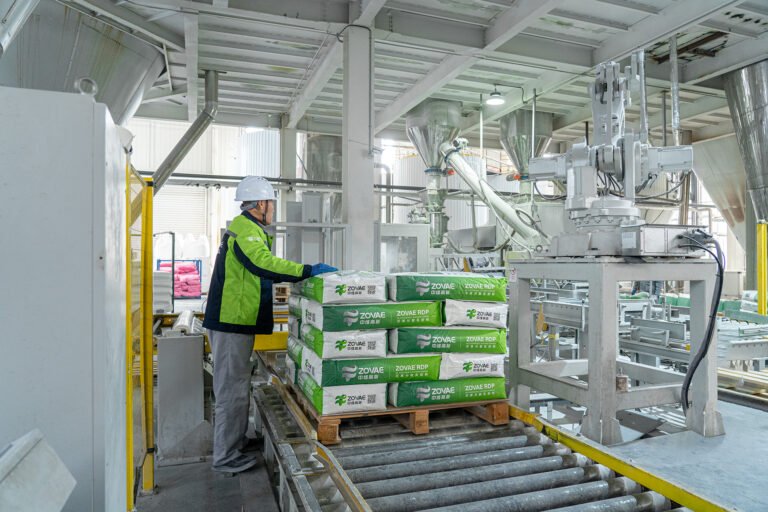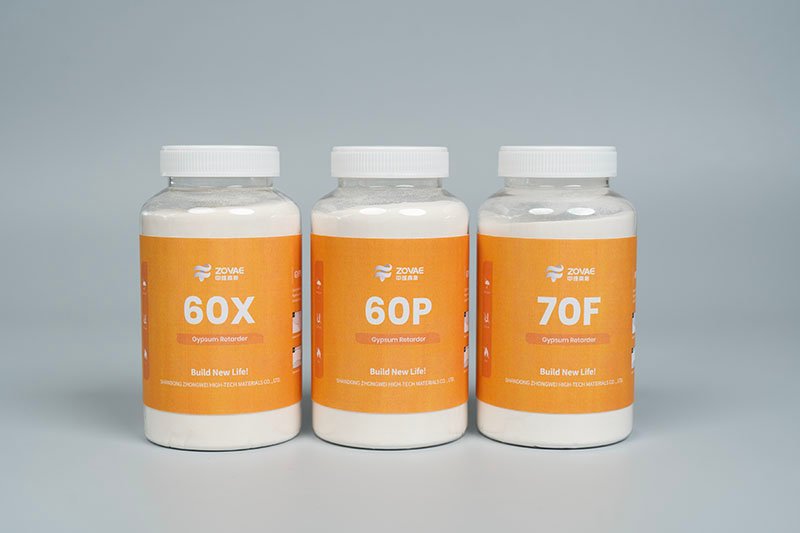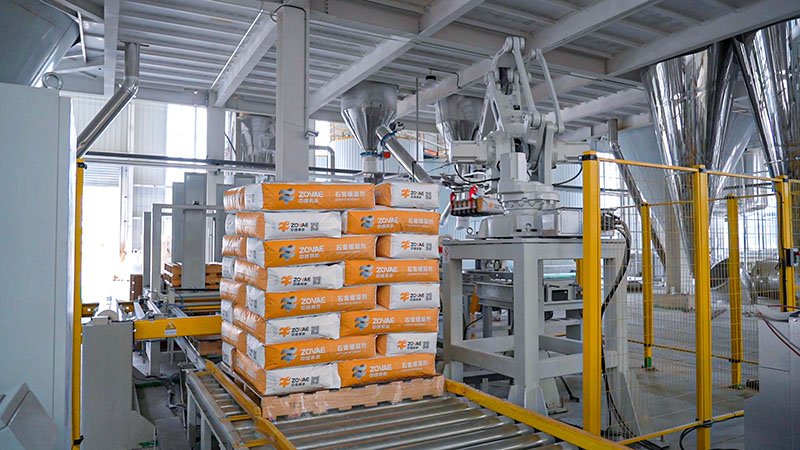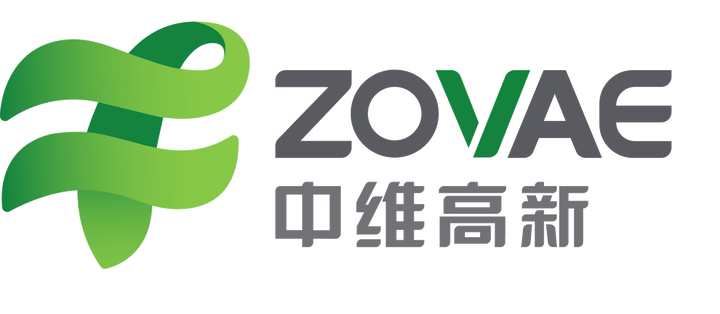
Merry Christmas ZOVAE
Wishing You Joy & Prosperity
Executive Summary
Zovae Gypsum Retarder is a state-of-the-art additive meticulously formulated for gypsum-based building materials to regulate and extend setting time with predictable precision. By moderating the critical hydration reaction from hemihydrate to dihydrate—through targeted inhibition of nucleation and early crystal growth—it significantly prolongs workable time without compromising final strength or long-term durability. This results in smoother placement, refined finishing, enhanced dimensional stability, and a notable reduction in defects across a wide array of products, including plasters, putties, boards, self-leveling compounds, bonding agents, and both precast and decorative elements. This detailed white paper delves into the scientific foundation of Zovae Gypsum Retarder, explores its core functions, elucidates its practical advantages, specifies diverse applications, and provides actionable guidance on formulation, dosing, quality control, and troubleshooting. Supplemented with global case studies, sustainability analyses, and standardized testing references (EN/ASTM), it equips industry professionals—contractors, manufacturers, and engineers—with the knowledge to maximize gypsum performance in modern construction and design projects.
What is Zovae Gypsum Retarder?
Zovae Gypsum Retarder represents a performance-optimized set-control admixture tailored explicitly for gypsum systems. When incorporated at minimal dosages, it delays both initial and final setting stages by intervening at strategic points in the hydration process of calcium sulfate hemihydrate (CaSO₄·½H₂O) to dihydrate (CaSO₄·2H₂O). Practically, this translates to a broader, more relaxed timeframe for crews to execute mixing, placement, molding, leveling, and finishing tasks. Importantly, downstream attributes such as compressive strength, surface hardness, bond integrity, and dimensional stability are preserved or even enhanced when dosing is accurately calibrated. Unlike rudimentary set modifiers of the past, Zovae leverages advanced chemical engineering to ensure uniformity across batches, adaptability to varying environmental conditions, and compatibility with diverse gypsum formulations, making it an indispensable tool in achieving high-quality outcomes in construction applications.
Why does set control matter so profoundly in gypsum applications? In a material renowned for rapid hardening, Zovae offers the power to transform time constraints into opportunities for precision, ensuring every project phase—from batching to curing—aligns with operational and aesthetic goals.
How It Works: Mechanism in Detail
Understanding Zovae Gypsum Retarder’s mode of action provides insight into its transformative impact on gypsum hydration dynamics:
Historically, gypsum set control relied on crude additives like lime or organic residues, offering inconsistent delays and often weakening the final product. The mid-20th-century shift toward targeted chemical retarders marked a significant leap, with Zovae’s formulations representing the pinnacle of this evolution. Leveraging refined actives and processing aids, Zovae ensures precise, repeatable delays tailored to modern construction’s demands across diverse climates and project scales.
Common Types of Gypsum Retarders
Zovae formulations incorporate one or more of the following active components, each selected to align with specific gypsum types (α/β hemihydrate or anhydrite), desired open times, and processing methodologies:
Note: Proper formulation is paramount. Zovae integrates these actives with tailored carriers and processing aids to safeguard final strength, minimize surface defects like dusting or pinholes, and ensure dosing stability at low addition rates, avoiding over-retardation that could delay early strength gain unnecessarily.
Why Gypsum Retarder is Essential in Construction
In regions like China, β-hemihydrate gypsum, commonly used on construction sites, can set within a mere 3–10 minutes after water addition, influenced by factors such as fineness, soluble impurities, water temperature, and ambient conditions. This rapid setting poses significant challenges for expansive areas, intricate mold work, and multi-crew operations where coordination is key. Zovae Gypsum Retarder extends this workable window—often to 2–3 hours with optimized dosing—enabling teams to:
Important: The actual delay achieved is contingent on dosage, gypsum type (α vs. β vs. anhydrite), water-to-gypsum ratio, temperature, and co-additives. Validation through set-time curves in your specific mix system is essential to lock in performance expectations.
Key Functions of Zovae Gypsum Retarder
1) Extends Setting Time
2) Improves Workability and Flow
3) Enhances Strength (When Correctly Dosed)
4) Controls Crystal Structure and Uniformity
Advantages of Using Zovae Gypsum Retarder
Recommended Applications for Zovae Gypsum Retarder
Designed for maximum versatility, Zovae seamlessly integrates into both on-site and factory-made gypsum products across a spectrum of construction and design needs:
Practical Formulation and Use Guidelines
Starting Dosage Windows (As Supplied; By Mass of Gypsum Binder)
Set-Time Targets and Temperature Considerations
Mixing and Sequencing (Standard Operating Procedure – SOP)
Compatibility Notes


Quality Control and Validation
Fresh-State Testing
Hardened-State Testing
Troubleshooting Quick Guide
Symptom: Sets Too Fast; Open Time Short
Symptom: Sets Too Slow; Soft Surface at Recoat
Symptom: Variable Set Batch to Batch
Symptom: Surface Dusting/Drag Marks
Symptom: Hairline Cracks or Curling
Safety, Handling, and Storage
Case Studies Illustrating Impact
Large-Scale Gypsum Plastering in Middle Eastern Heat (Dubai, UAE)
Decorative Gypsum Molding in European Artisan Studio (Paris, France)
Precast Gypsum Panels in Cold North American Conditions (Toronto, Canada)
Sustainability and Cost-in-Use Benefits
Material Efficiency
Energy and Labor Savings
Indoor Environmental Quality
Lifecycle Value
Economic Perspective
Implementation Roadmap for Optimal Use
Define Performance Targets
Screen Retarder Candidates
Simulate Real-World Conditions
Establish Standard Operating Procedures (SOPs)
Scale Up and Monitor Performance
Document and Iterate for Improvement
Frequently Asked Questions (FAQ)
Q1: What Does a Gypsum Retarder Do?
Q2: Does Gypsum Retarder Affect Strength?
Q3: Where Is Gypsum Retarder Typically Used?
Q4: How Long Can Gypsum Setting Be Delayed?
Q5: Is Zovae Suitable for Precast Applications?
Q6: Does Zovae Change Water Demand or Consistency?
Q7: Do α and β Hemihydrate Systems Need Different Doses?
Q8: How Critical Is Water Temperature Control?
Q9: Can Zovae Be Used with Air-Entraining or Defoaming Systems?
Q10: Is Zovae Compatible with Pigments and Lightweight Fillers?
Closing Takeaways
Getting Started with Zovae
If you share your gypsum type (α/β hemihydrate or anhydrite), target open time and demold window, typical water temperature range, and current additive package (plasticizer, cellulose, accelerators, defoamers), Zovae’s technical team will recommend the optimal retarder grade, a starting dosage range, and a compact screening plan tailored to your needs. With a precisely calibrated setting profile, you’ll extend workability, elevate finish quality, and deliver dimensionally stable results consistently, regardless of season or project complexity.


Please leave your contact information, and Zovae’s sales team will provide you with dedicated service.
